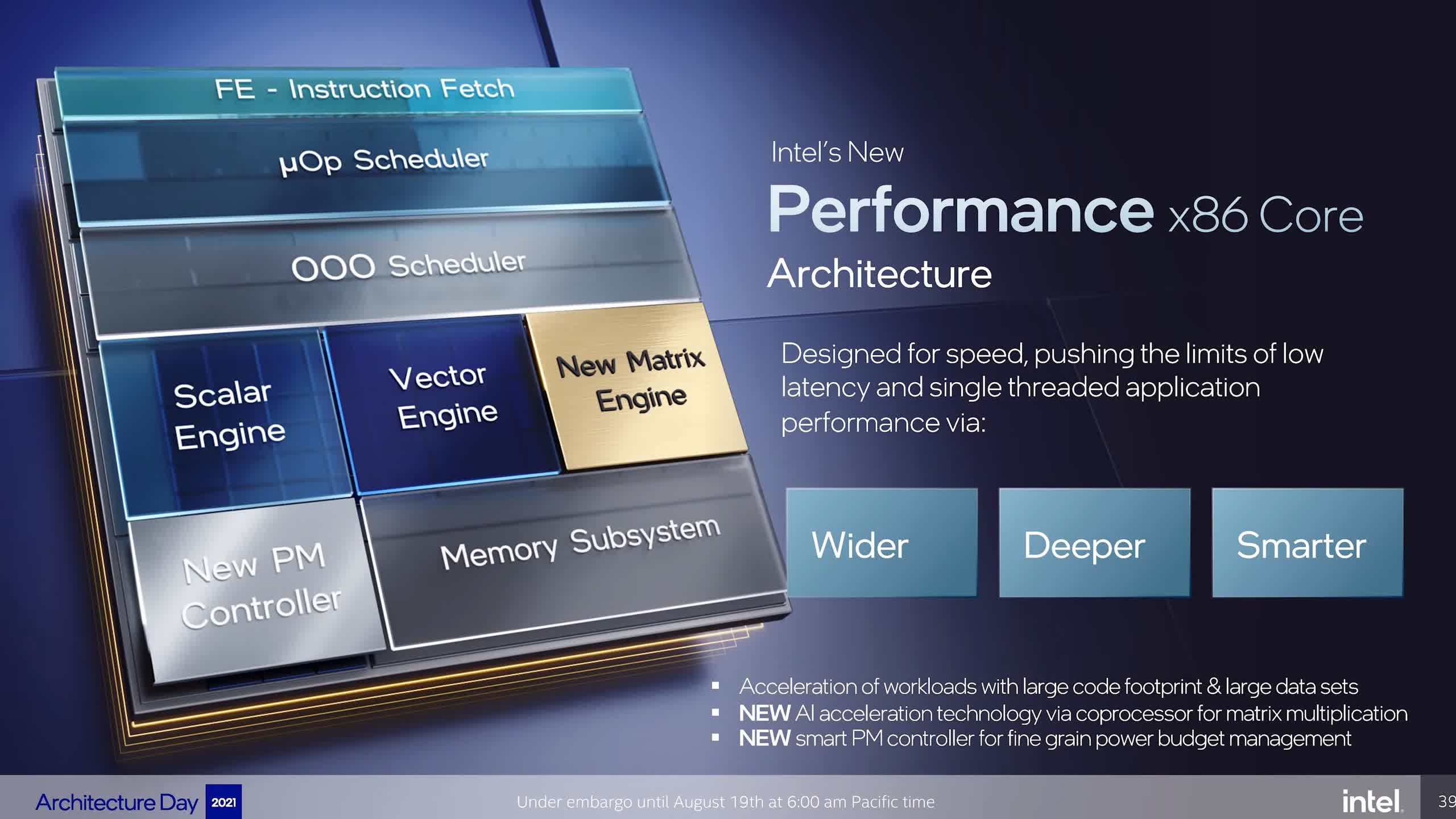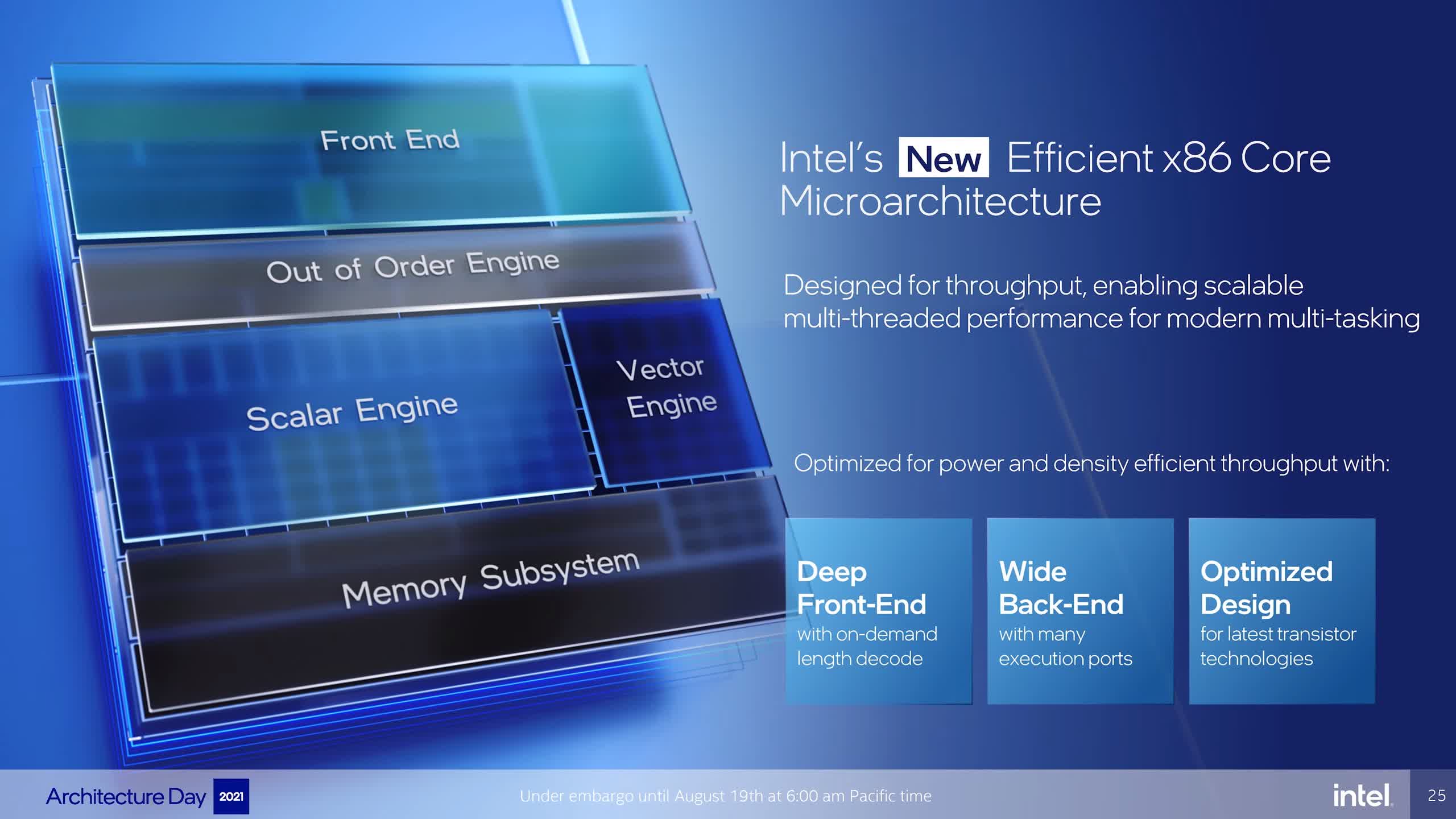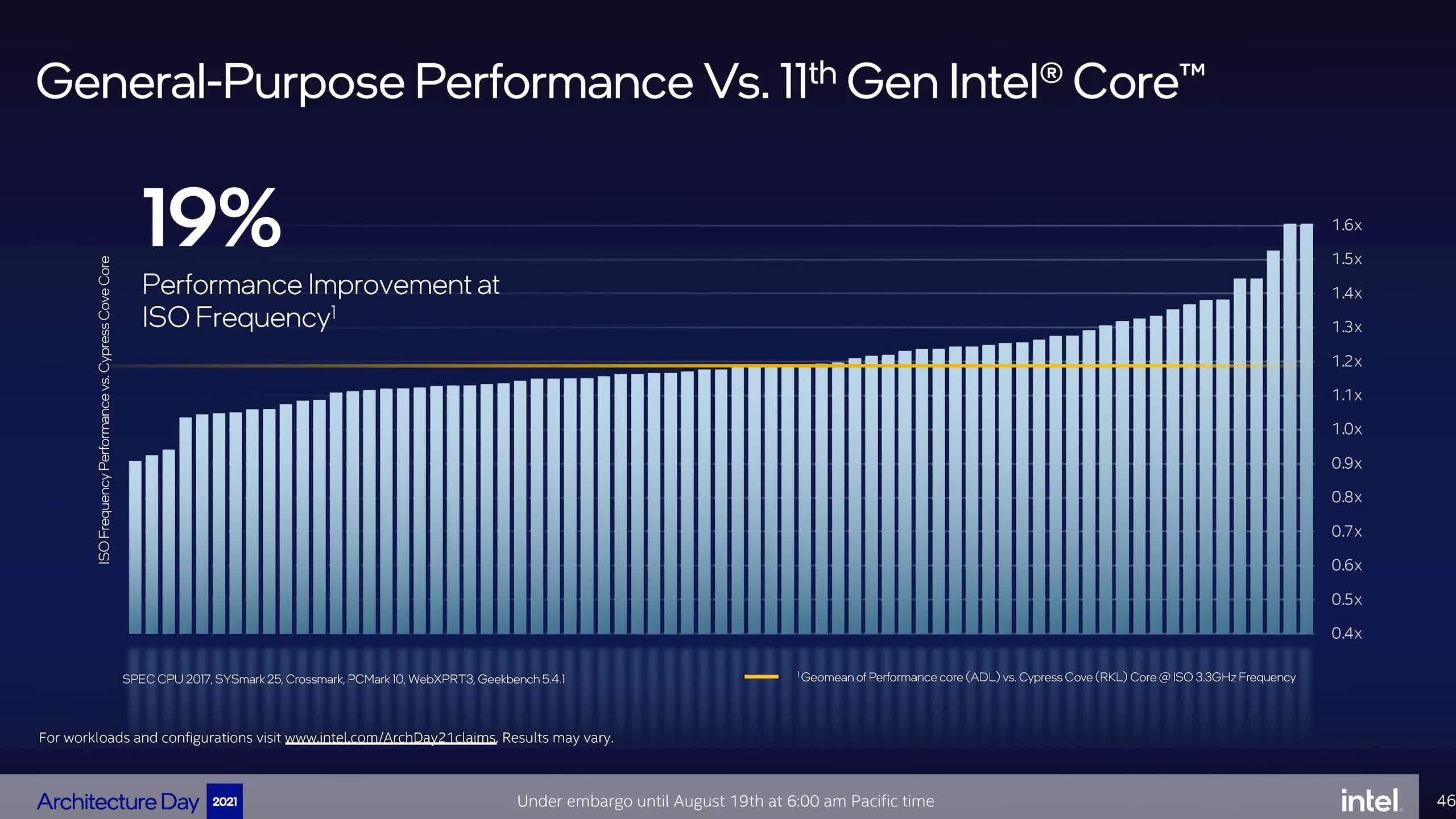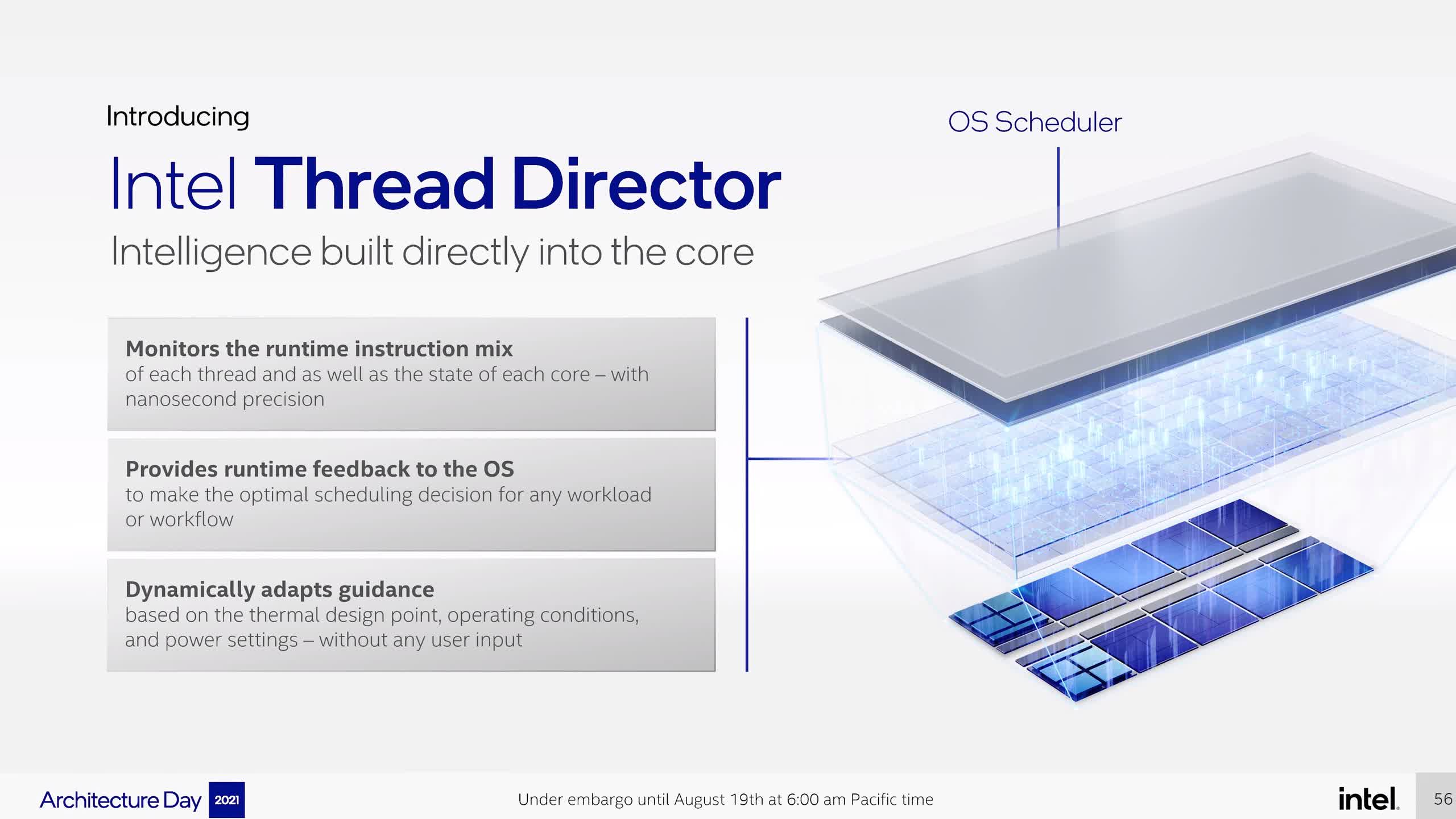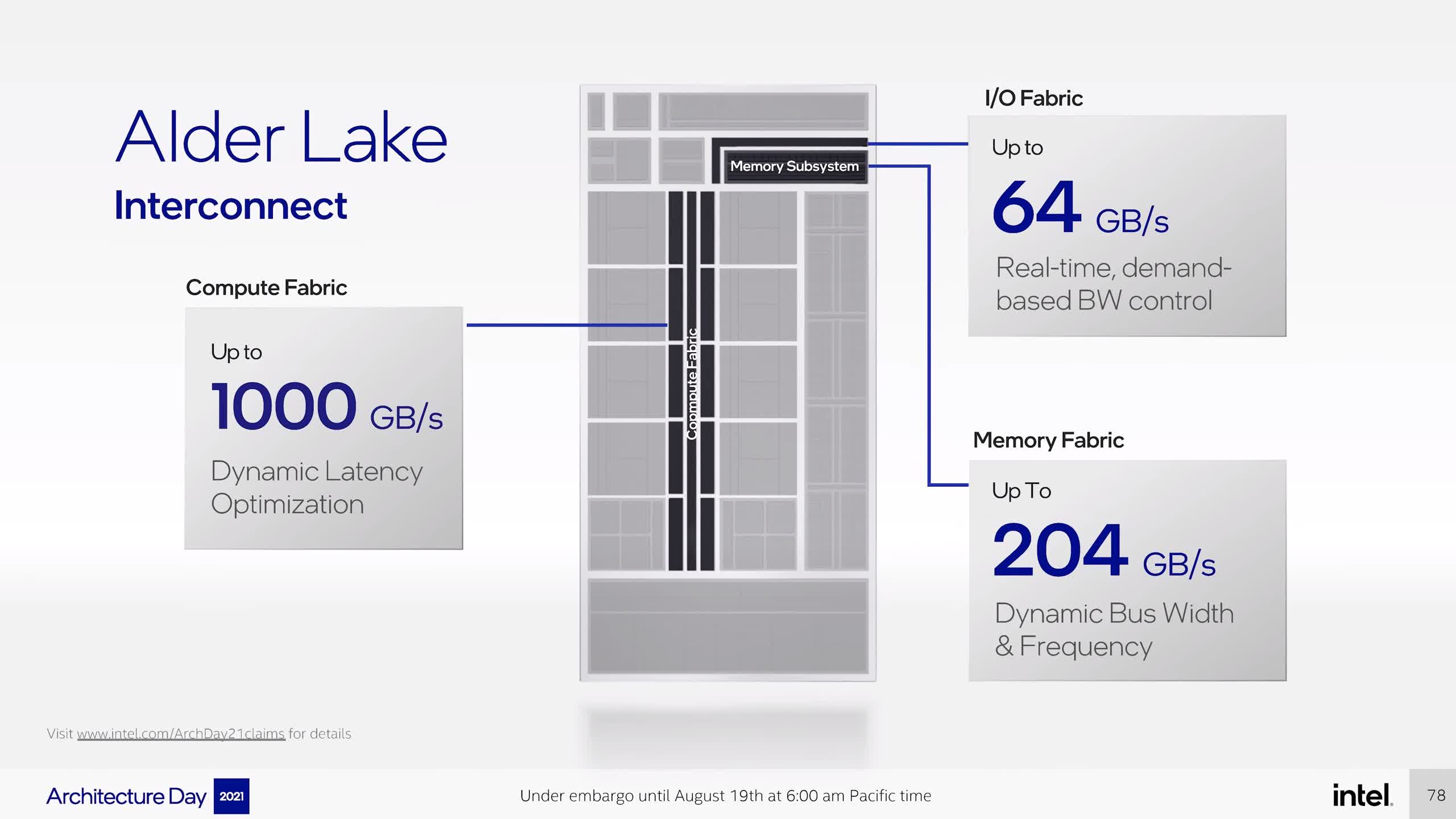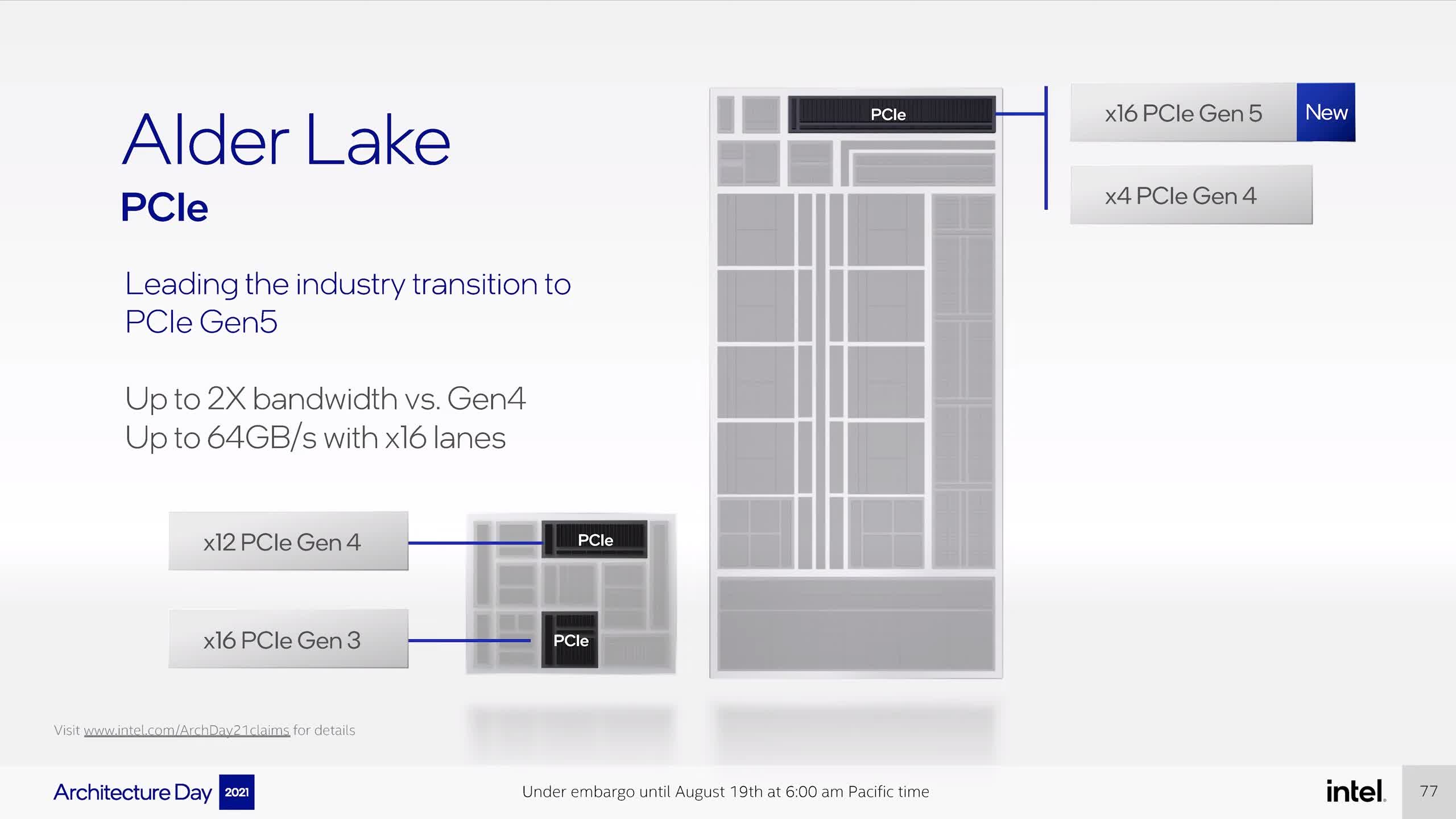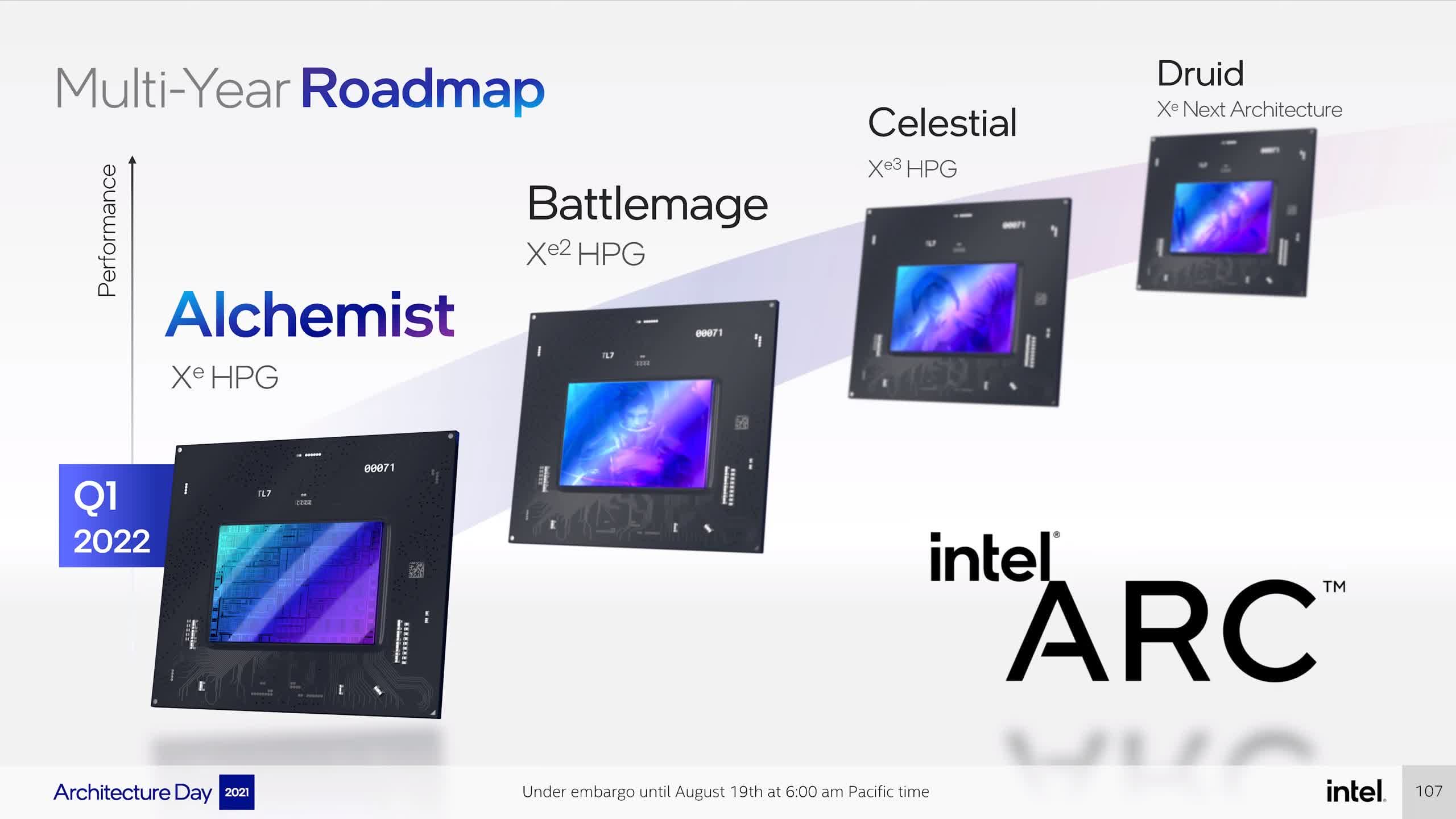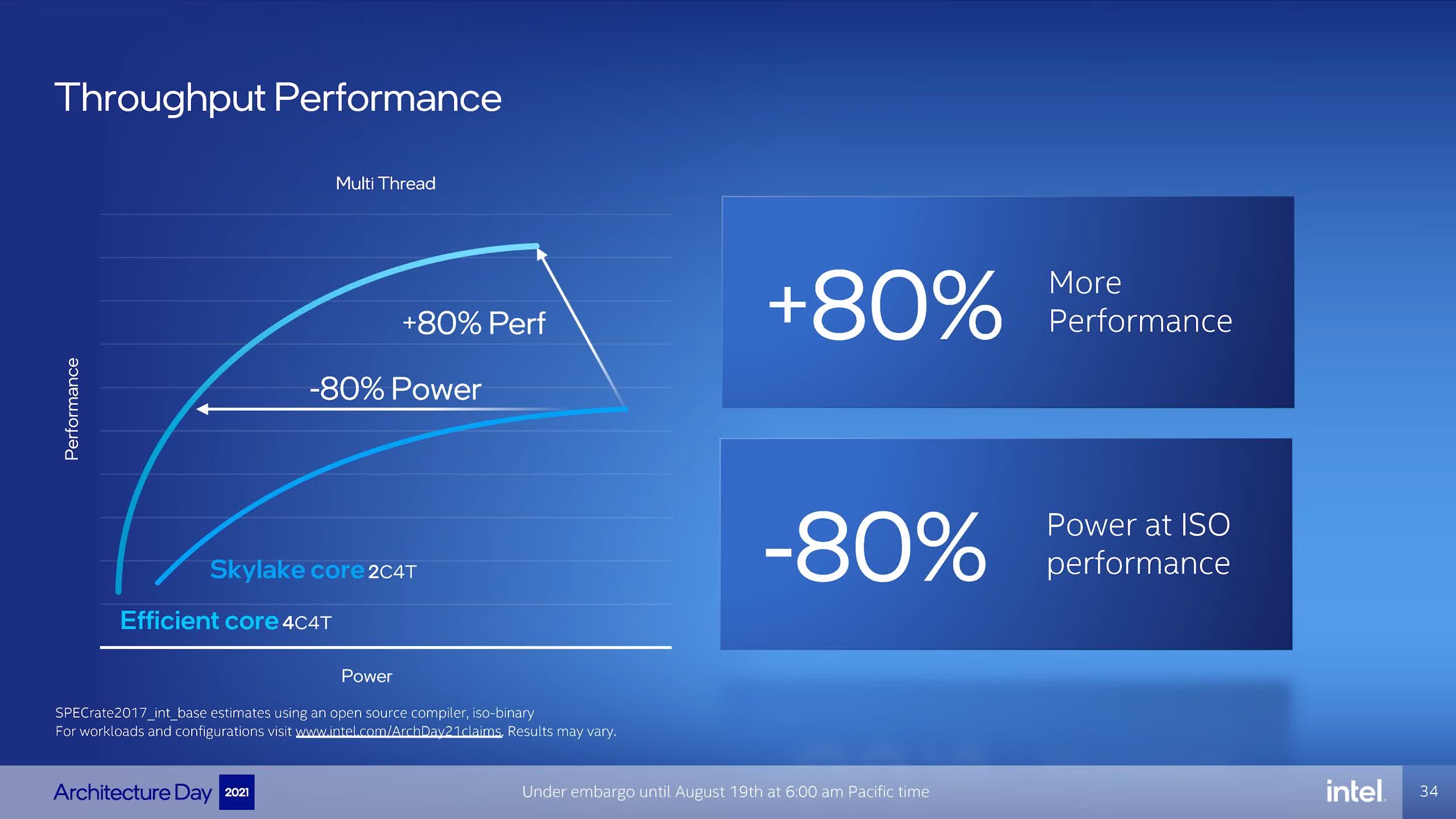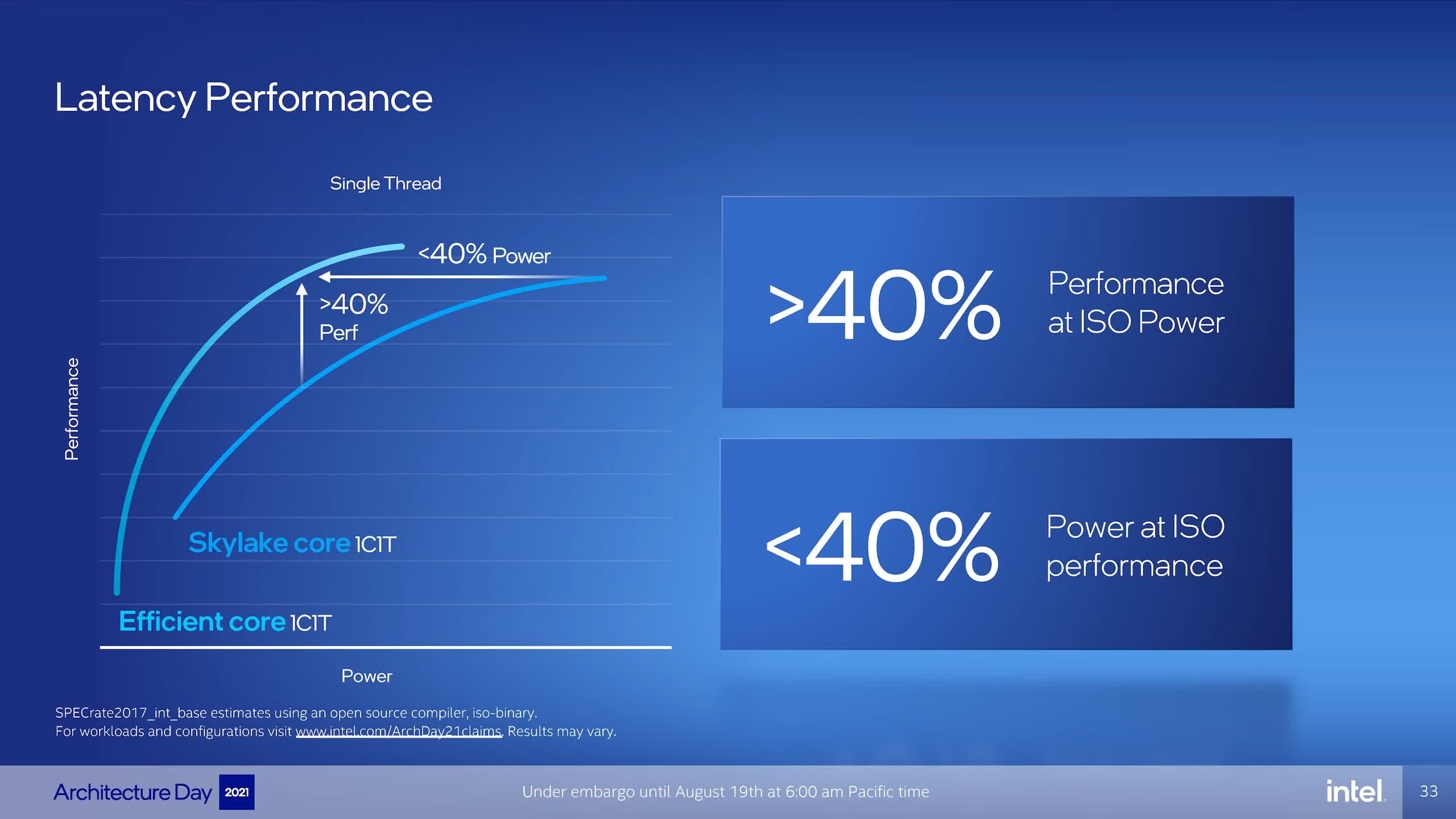Something to look forward to: Intel appears to be on a roll as of late. Fresh off an impressive discussion of long-term chip manufacturing process roadmap, and the debut of its new Intel Arc brand for discrete graphics chips (GPUs) aimed at gamers, the company has provided an equally impressive and comprehensive view of the designs that will be powering these and other future chips at its latest Architecture Day 2021.
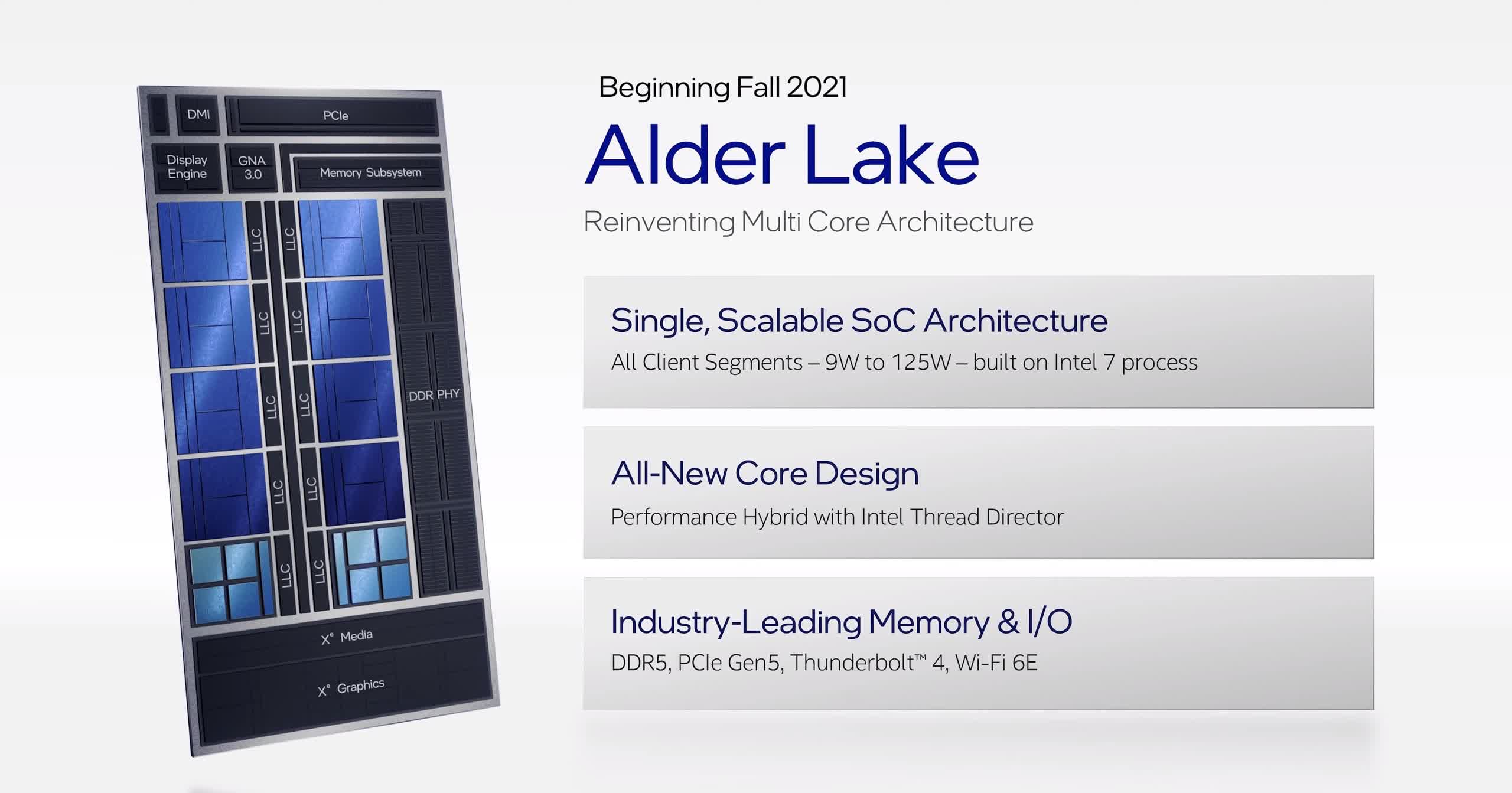
Intel talked about a huge range of items, here are the highlights:
- Two new CPU core designs—one termed an efficiency core and the other a performance core
- A finalized new CPU for PCs -- the highly anticipated Intel Core 12th generation, codenamed Alder Lake -- that leverages those designs and integrates an intriguing element Intel calls a Thread Director
- A data center-focused CPU (codenamed Sapphire Rapids) that uses the new performance core
- Two new GPU architectures based on the latest Xe GPU core
- Two complete GPU SoC designs: one focused on gaming graphics codenamed Alchemist, the other on AI and high-performance computing codenamed Ponte Vecchio
- A next-generation IPU (infrastructure processing unit) leveraging FPGAs and a custom ASIC that’s designed to simplify the creation of cloud computing-focused data centers
- Numerous software advancements, including an AI-powered graphics tool called XeSS (Xe Super Sampling) -- Intel’s equivalent to Nvidia’s DLSS technology -- meant to improve the speed and quality of 4K gaming visuals, and the latest developments in its OneAPI framework for simplifying the process of writing software that can use all these different chips
The key takeaway from that list is that Intel is serious about its intention of retaking the crown in the world of high-performance CPUs, but it also wants to make its mark in GPUs, IPUs, ASICs and multiple different types of chips. In addition, the company is making a critical strategic pivot towards integrating smaller, individual elements together to achieve that. To put it succinctly, it’s planning to use multiple tile-based designs across multiple types of chips.
In the CPU space, this type of hybrid architecture represents a big change for the company, but it is something competitors like AMD and Apple have shown can provide a big performance advantage.
Much of this stems from Arm’s big.LITTLE mobile chip design methodology that debuted back in 2011 with the Cortex-A7 CPU. In these early Arm designs, the focus was on power savings because of its use in smartphones and other battery-powered devices. As AMD and Apple recently illustrated, however, similar hybrid computing concepts can be used to combine multiple cores together for big performance gains as well. These chiplet-based designs, use various types of fast interconnect technologies to make multiple computing “tiles” essentially function as one big unit.
In Intel’s case, the company has created a new efficiency core and a new performance core that it is combining in its next generation Alder Lake CPUs for both desktop and mobile PCs. A new twist that Intel is also bringing to Alder Lake -- which is expected to make its official debut in the fall -- is a new hardware element the company is calling Thread Director. Thread Director is going to provide some unique advantages to Alder Lake PCs running Windows 11, and should show some benefits on Windows 10-based Alder Lake machines as well.
This goes back to how these hybrid, multi-core CPU designs function. As appealing as the idea of combining multiple computing units into a single logical unit may sound, without the appropriate software to take advantage of that design, it won’t be of much use.
For Windows-based PCs, it turns out that much of the hard work of determining what elements of a software application workload should be sent to what type of core is handled by the Windows Thread Manager. Unbeknownst to many, however, is that, up until now, those decisions were often made on intelligent guesses of what a given process on the CPU was doing. With Thread Director, Intel has created a hardware-based mechanism for providing telemetry information about the types of instructions and specific needs that a given thread is using on the CPU. As it dynamically collects that data, Thread Director sends the details back to the Windows Thread Manager, allowing it to more intelligently allocate where different threads should go. The bottom line is more efficient use of the capabilities of a hybrid, multi-core CPU, which should translate into better overall performance.
In addition to the benefits of Thread Director, the work shows a new level of cooperation between Intel and Microsoft to achieve a tight level of integration. By focusing the biggest efforts on Windows 11, it also shows how the two companies are once working to drive the PC industry forward.
The new efforts on graphics processing and GPUs are also important steps forward for Intel. Challenging both Nvidia and AMD in the discrete GPU market is no small task -- especially given their previous missteps in the market. However, given the increasing importance of GPUs, not only for gaming but also AI acceleration, data analytics, and other applications, it’s easy to understand why Intel has been hard at work on pushing these.
Finally, a few comments are in order about the data center-focused Ponte Vecchio GPU SoC as detailed at Architecture Day. Intel demonstrated the massive new chip running some impressive early benchmarks, beating Nvidia’s current best performance for inference and training on the ResNet 50 convolutional neural network. This chip already incorporates many of Intel’s new initiatives into a single component: pure architectural advancements in discrete GPUs, as well as integration of multiple process and packaging technologies. From Foveros chip-stacking and EMIB high-performance interconnects to the combination of the new Intel 7 process technology along with cutting edge tiles from other foundries, Ponte Vecchio looks to be a technological tour-de-force.
Intel will have to execute on its aggressive vision across chip design, packaging, and manufacturing to achieve success with Ponte Vecchio, but it certainly stands as an impressive statement on where the company looks to be headed.
Bob O’Donnell is the founder and chief analyst of TECHnalysis Research, LLC a technology consulting firm that provides strategic consulting and market research services to the technology industry and professional financial community. You can follow him on Twitter @bobodtech.
https://www.techspot.com/news/90859-intel-lays-out-multi-chip-architecture-plans-12th.html
